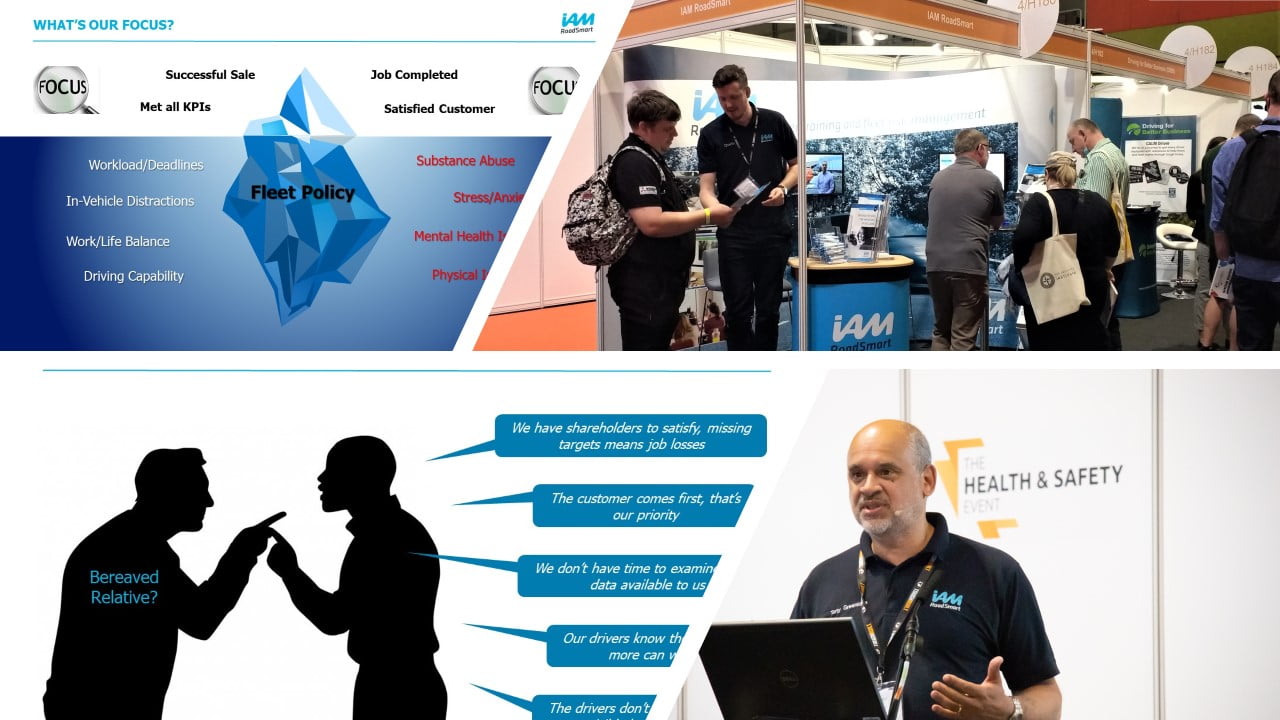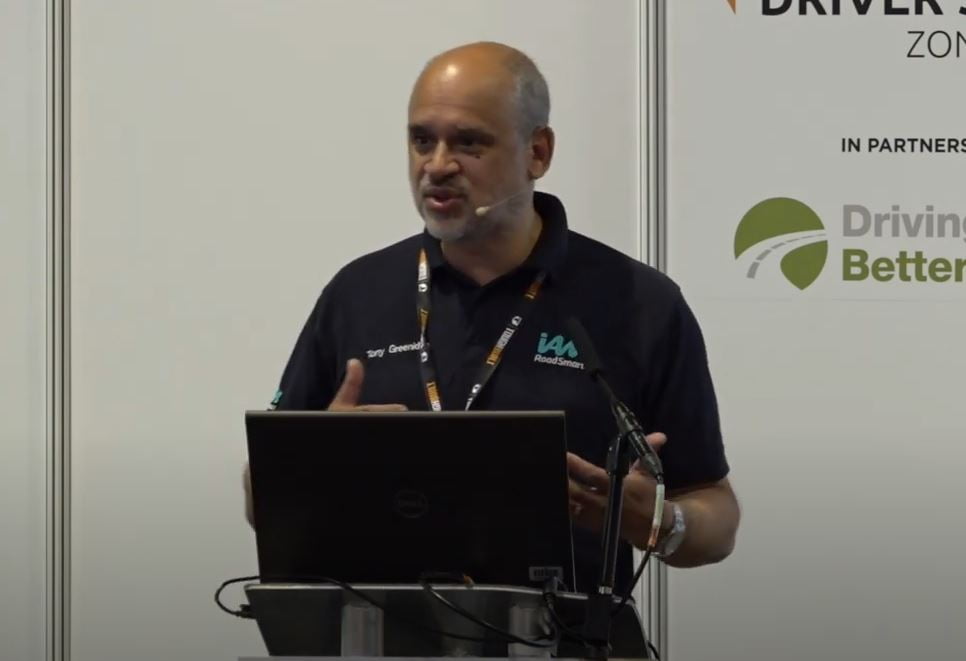
Back in September, IAM RoadSmart were invited by Driving for Better Business to take part in their ‘Driver Safety Zone’ – a content theatre providing visitors to this year’s Health & Safety Event with a programme of insights focusing on work-related road safety. The timing was highly appropriate, given that the Event coincided with the release of some updated guidelines from the Health & Safety Executive (HSE), aimed at providing businesses with greater clarity on the requirements of a road safety policy and on driver risk management procedures.
The Health & Safety Event was the first major exhibition for this industry sector since the start of the first COVID-19 lockdown, and it was therefore a welcome opportunity to give all areas of workplace safety some long-overdue attention, especially road safety. The pandemic has brought about changes in many workers’ travel habits, and changes in consumer behaviour have meant that workers in certain sectors may continue to bear the brunt of new pressures, all with potential knock-on effects for road risk.
As a road safety organisation, our primary concern at IAM RoadSmart is that the safety of those who drive for work, and that of other road users, are not compromised by these new pressures. Employers have a major role to play in ensuring that those who drive on behalf of the business are not a danger to themselves or the public, and they can only fulfil this role by remaining mindful of the factors that affect drivers operating in a working environment and take steps to address them.
Tip of the iceberg
Tony Greenidge, IAM RoadSmart’s CEO, summarised some of those issues that often fall under the radar. “At the top of the iceberg, that’s where the focus is… you don’t really care about the journey that your driver has undertaken to where they’re going. What you’re interested in is, did they make the sale? Did they satisfy the customer? Did they complete the job…What’s going on underneath the iceberg is the workload, the deadlines that those people have got to meet, the in-vehicle distractions, do they answer the phone; do they not? What’s their work-life balance? What’s their capability to actually drive effectively?”
Not all of these factors will always be apparent at first glance, but within a culture of care and support for staff, they can and should inform policy decisions affecting all aspects of workplace safety. In any commercial enterprise, there may exist the temptation to focus entirely on performance or output, justifying this with reference to the need to remain competitive, or perhaps the belief that workers are perfectly well because they don’t look tired or stressed.
However, were they to be killed or injured in the course of their work, or kill or injure a member of the public, would those sources of justification be appropriate? Tony went on to ask, “If you’re the bereaved relative and the fleet person that’s stood in front of you is giving those answers, would that satisfy you? Would you come away thinking ‘yeah I get it…so-and-so died but I can understand where they’re coming from? I don’t think you would.”
Stay up to date
In the coming weeks and months, we will be doing our bit to keep people informed about the HSE’s updated guidelines for managing work-related road safety, and offering more insights and strategies to help you maintain compliance and also enhance the safety of the people who drive on behalf of your business, however the motoring landscapes develops in the wake of the pandemic and beyond.
To stay in the loop, make sure you’re subscribed to our email newsletters, or get in touch with our team for more information about the tools and training courses we offer.



